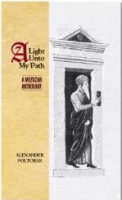Rosh HaShanah: The Beginning of Change II
Abstract This essay explores the profound connections between language, philosophy, physics, and spirituality in the context of Rosh HaShanah. By examining the linguistic roots of
Abstract This essay explores the profound connections between language, philosophy, physics, and spirituality in the context of Rosh HaShanah. By examining the linguistic roots of
It’s All in the Name Rosh HaShanah is usually translated as the New Year. When translated literally, it means the “Head of the Year.” In

A light shalt thou make to the ark…with lower, second, and third stories shalt thou make it. (Genesis 6:16) We mentioned in the previous posts

In the beginning G‑d created the heaven and the earth. (Genesis 1:1) The first verse in the Torah is key to understanding the fundamentals

The months of Tishrei is full of holidays, and they all share a common theme—the unification of time—past, present, and future. It all starts with

The mezuzah is one of the few miẓvot ([divine] “commandments”) for which the Torah states its reward. In this case, the reward is a long